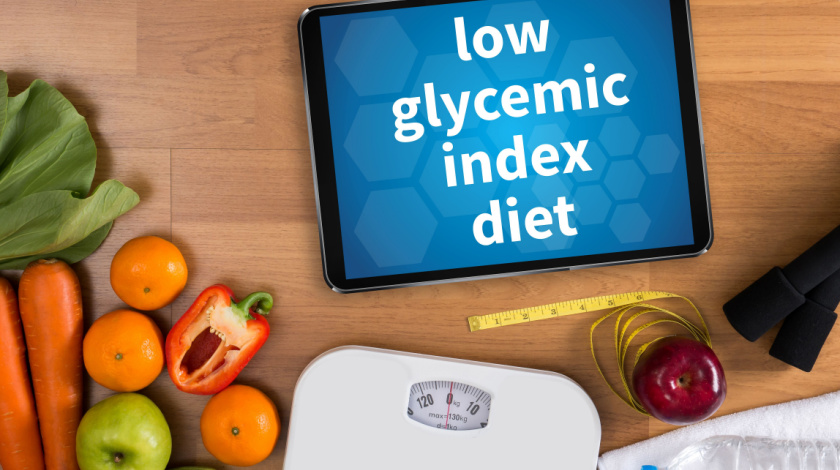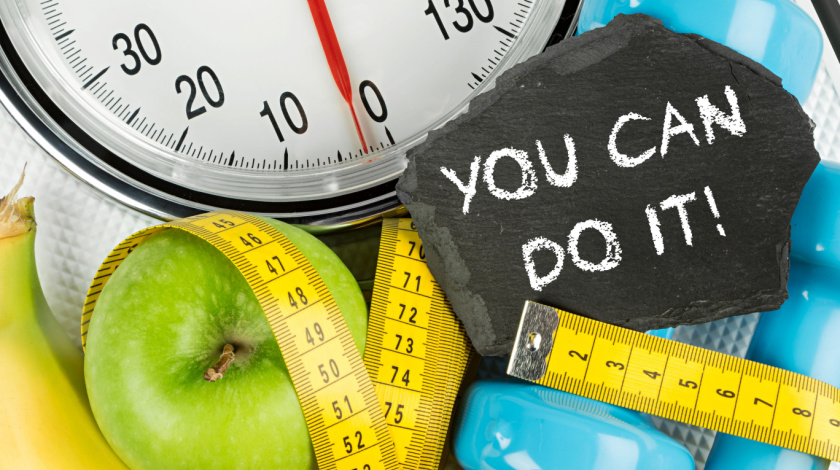One of the collateral consequences of diabetes is the fear it creates for food. So, whether you have diabetes or have been tested with pre-diabetes, the first advice by people and medical professionals will be to “Choose your food wisely”. This instantly creates a panic situation. Many people with diabetes begin to look at food with doubt. This wariness increases emotional woes. In spite of food playing an important role in diabetes management, you don’t have to stress yourself. Meal planning, in terms of optimised calorie/nutrient intake along with regular blood sugar monitoring with a glucometer, should suffice to successfully achieve your glycemic goals.

You need to understand that the idea is to optimise meals that are diabetes-friendly and not to lose weight, which incidentally is also a great way to address high blood sugar levels. In fact, meal planning rewards for people with diabetes with improved blood glucose value and weight loss, too. What you need to do is stick around the 1500-calorie per-day mark. Of course, the constituents of this meal will vary depending on your current diabetes status, body needs, and satiety quotient.
Introduction – The Importance of Balanced Meal Planning in Diabetes Control
Balanced meal planning also means that your intake of carbs will be static in nature. This will ensure minimum fluctuations because carbs are directly responsible for glucose spikes. Remember, your balanced meal should be easily available at home and away. It means when you are at your workplace or on a lunch/dinner date, you have easy access to these meals. You need to understand that a balanced meal is designed by your health provider/dietician after taking into consideration several critical parameters, such as your lifestyle equation, the kind of food you love, accessibility, your current blood sugar value, and future goals. It is highly advised to consult a medical professional who, in tandem with a dietician, will design a meal that has the right amounts of nutrients, fats, proteins, and carbs. Additionally, a handy glucometer and glucometer strips will provide a visual window to your diabetes goal.
Building a Diabetes-Friendly Plate
On the other hand, if you are creating your own balanced meal, make sure you follow “The Plate Method”. Here is the breakup of food that should be incorporated-
- Half a plate filled with vegetables like carrots, broccoli or mixed fruit salad, which are rich in vitamins, minerals, fibre and phytochemicals.
- One-quarter of the plate is filled with lean protein foods such as boiled chicken, turkey, eggs, or tofu. They keep the stomach happy without upsetting the glucose level.
- One quarter contains essential carbs such as potatoes or pasta. They are important, too, because they provide our body with the required energy.
- Plain water or beverages with little or no sugar (0 Calories). Drinking plain water not only keeps the body hydrated but also reduces blood sugar levels.
Tip 1 – Embrace Fibre-Rich Foods
Fibre in any form is good for people with diabetes. Both soluble and insoluble fibres offer a great way to reduce blood sugar levels. Unlike classic carbs, fibre is not digested/absorbed by the body. It is broken down over a period of time and, therefore, prevents spikes in glucose levels. Add Brussels, black beans, lentils, and sprouts to your meal, or simply design a fruit salad with apple, banana, and avocado. Whatever your choice, follow the “Plate Method” so that you don’t go overboard with certain foods and thereby disturb the gut equilibrium. A few studies have shown that consuming decent amounts of the fibre reduces glycosylated haemoglobin levels also. However, even the best sugar testing machine will not suffice, as A1C tests are typically done in professional labs.
Tip 2 – Choose Complex Carbohydrates
As a person with diabetes, you must understand that simple and complex carbohydrates are converted into glucose. It is used for the body’s energy needs. Although carbs also form an integral part of a diabetes meal, their quantity is fine-tuned, depending on the concerned person’s glucose marker. The idea is to provide as little carbs as possible in tandem with protein, fats, and fibre. What you need to do is reserve a small space on your plate for complex carbs. Avoid simple carbs such as white rice and flour (and bread). These foods are quickly digested by the body, thereby releasing large amounts of sugar in the bloodstream. Some of the food items you need to tick off your meal menu.
Tip 3 – Incorporate Lean Protein Sources
One of the tricks that you, as a person with diabetes, can adopt is having a quarter of a plate filled with protein such as fish, egg, or maybe boiled chicken. For those belonging to the vegetarian category, add quinoa, lentils, broccoli, and peanuts to your meals. For breakfast, egg or brown bread with peanut butter will provide enough protein to last an entire day. Remember, our body is tuned differently for different foods. Proteins slow down the intake of carbs and thereby restrict sugar spillover in the bloodstream. You can check the protein impact on blood sugar levels with a sugar machine and sugar test strips.
Tip 4 – Healthy Fats for Heart Health
Heart-healthy fats can be consumed as snacks or with meals. For example, munching almonds, cashews, and nut variants in between meals will provide decent amounts of good fat to the body. However, you need to make sure that you add more monounsaturated fats. Add canola oil to cook your food. It is known to balance cholesterol levels and improve insulin sensitivity. Add avocado to your snacks in the form of salad or a standalone cooked dish. Olives and olive oil are also a perfect partner in fighting bad cholesterol and improving sugar levels.
Tip 5 – Portion Control and Mindful Eating
Mindful eating includes listening to the hunger pangs carefully. Are these loneliness or boredom-generated food desires? If yes, then simply sleep over it. Your body doesn’t actually need feeding. Emotionally triggered hunger pangs also need to be discarded. Portion control, on the other hand, is simply a part of “the Plate Method” concept. By restricting each portion, you automatically cut down on food intake.
It takes our brain almost twenty minutes to receive the “Satiated” signal, and therefore you need to –
- Eat slowly – Take a pause between each mouthful.
- Chew the food – Think of it as your last serve.
Supplement the above with regular tests using a trusted glucometer.
Tip 6 – Balanced Snacking for Blood Sugar Stability
Many health professionals, in general, and people with diabetes, in particular, have this notion that snacking can keep you away from attaining your glycemic goals. Studies have shown this to be incorrect. In fact, having snacks, albeit healthy and low in calories, not only keeps the blood sugar consistent all the time but also prevents overeating during regular meals.
So, what are some of the diabetes-friendly snacks?
- Popcorn – Also called the “Whole Grain” snack, it is packed with fibre, which helps reduce weight, offers gratifying fulfilment, and tastes good. This low-fat, low-carb, fun snack is an evergreen option for people with diabetes.
- Pistachios – Rich in proteins, pistachios are a great in-between food item that offers quick but temporary satiety and helps develop a lean body mass. Pistachios also reduce bad cholesterol or LDL and are loaded with good monounsaturated and polyunsaturated fats.
- Quick Cook Oats – Oats are known for their high glycemic value. This is mainly because it contains beta-glucan, a soluble fibre that reduces blood glucose levels and provides profound satiation. In many studies, oatmeal has been found to reduce the intake of insulin in chronic patients who have diabetes. Therefore, a sugar machine and glucometer strips are crucial to checking blood sugar stability if you intend to snack.
Read More: Glucometer Strips – The Cornerstone of Reliable Blood Sugar Monitoring
Conclusion
Diabetes self-management service providers or professional diabetes education programs can make a big difference in addressing diabetes, especially when diet and exercise are the basis of your regime. Only a diabetes educator can help you design a healthy and satiating meal that also complements your lifestyle, body needs and glycaemic index status. Connect with your local educator or visit BeatO, one of the most trusted start-ups that provides a plethora of services apart from diabetes management programs.
Disclaimer:The content of this article is compiled information from generic and public sources. It is in no way a substitute, suggestion, or advice for a qualified medical opinion. Always consult a specialist or your own doctor for more information. BeatoApp does not claim responsibility for this information .
Dr. Navneet Agarwal is an established and highly skilled Diabetology with over 25 years of experience in Diabetology & Obesity. He is well-regarded for his quality and patient-centered diabetes care. Also, keep track of your blood sugar levels with a Doctors’ approved smart glucometer and elevate your healthcare routine.




